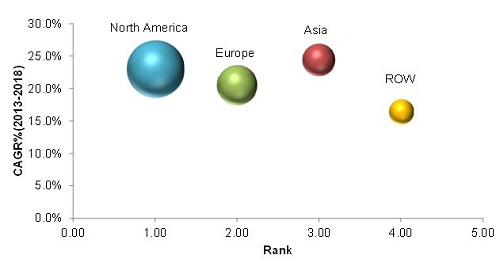Practices › Advanced Genetic Sequencing › Whole Exome Sequencing Market
Whole Exome Sequencing Market
Advances in DNA sequencing have transformed genomics and paved the way for whole exome sequencing in research. Whole exome sequencing is cost-efficient and quick, as compared to whole-genome sequencing. Sequencing the exome is also considered more effective, as exons possess 85% of disease traits. Thus, WES systems, kits, and services have seen increased adoption by researchers as they not only simplify work but also save time.
Technological advancements in sequencing systems, global alliances amongst leading research institutes to boost drug discovery, and an increase in life science and R&D expenditure are the key factors that are expected to drive the growth of this market. Primary factors that are restraining the growth of this market include high instrument costs, the need for skilled professionals, and high reliance on grants and funds.
The global whole exome sequencing market is categorized into five broad segments, namely, products and services, technologies, applications, end users, and geography. The global WES products and services market, by products, comprises systems and kits. The kits market is further segmented into DNA fragmentation, end repair, A-tailing, size selection kits, library preparation kits, and target enrichment kits. The WES products and services market, by services, comprises sequencing and data analysis services. The services market accounted for the largest share of the global WES products and services market in 2013.
The whole exome sequencing market, by applications, includes diagnostics, drug discovery and development, personalized medicine, and animal and plant research. In 2013, the diagnostics market held the largest share of the global WES applications market. The market, by end users, comprises research centers, academic and government institutions, hospitals and clinics, and pharmaceutical and biotech companies, among others. In 2013, research centers and academic and government institutions accounted for the largest share of the global market, by end users. On the basis of geography, this market is classified into four regions, namely, North America, Europe, Asia and Rest of the World (RoW).
Global Whole Exome Sequencing Market, by Geography, 2013 – 2018

Source: MarketsandMarkets Analysis
This global whole exome sequencing market was valued at $326.6 million in 2013 and is expected to grow at a CAGR of 22.0% from 2013 to 2018, to reach $884.1 million by 2018. The market is dominated by North America, followed by Europe, Asia, and the Rest of the World (RoW). North America is expected to maintain its leadership in the market in the coming years. Growth in the North American market is likely to be driven by factors such as the increasing use of exome sequencing in rare disease research, increased government funding, and large number of sequencing-related conferences and annual meetings hosted by the U.S.
The major players in the global whole exome sequencing market include Illumina, Inc. (U.S.) Life Technologies (acquired by Thermo Fisher Scientific, Inc.) (U.S.), Roche NimbleGen, Inc. (U.S.), Agilent Technologies (U.S.), BGI (Beijing Genomics Institute, China), Eurofins Genomics, Inc. (Germany), Sengenics (U.S.), GENEWIZ, Inc. (U.S.), Knome, Inc. (U.S.), Macrogen, Inc. (South Korea), and Ambry Genetics (U.S.), among others.
